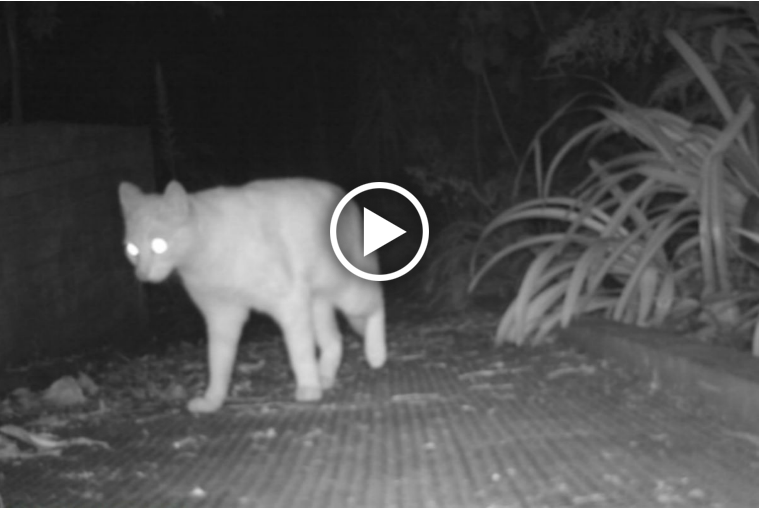A Victoria University researcher is trying to find out just how deadly the domestic cat is for native wildlife.
In a joint project with the Wellington City Council, miniature cameras have been attached to the collars of a group of cats to monitor their behaviour.
Heidy Kikillus’ pedigree, Poncho, is the poster cat for her study, which aims to find out what cats kill.
“I guess ignorance is bliss in a lot of cases. This will give us a better idea of what’s going on and bring it to light so we don’t have our head in the sand around this whole cat issue,” she says.
Motion-activated cameras are attached to cats’ collars, then the footage is collected and viewed. There’s a lot of prowling and scratching on the agenda but after just a couple of days, Ms Kikillus spots a kill.
One of the cats in the study, Moggy X, was caught on camera eating a native skink.
The pilot study focuses on the Karori area where native wildlife from the Zealandia sanctuary spills into the surrounding suburb.
“We’ve noticed the birdlife has really built up over the last 10 years, we have tuis, we have kaka,” says Carol Stewart, one of the participants.
She keeps her cat Charlie inside at night but wants to know whether she needs to do more.
“If he turned out to catch something we’d put a bell on him for sure,” she says.
Gareth Morgan, the man who suggested cats should be kept inside at all times, is launching his own study.
He’s installing cameras at up to 100 Wellington properties to count the number of cats which pass through at night, hunting.
He’s already tested his own backyard.
“[The] first night we did this we had nine different cats come across the property,” he says.
“It’s been pretty similar every night since.”
It’s hoped both studies will produce a clearer picture of cats’ habits and the threat they pose to wildlife.

